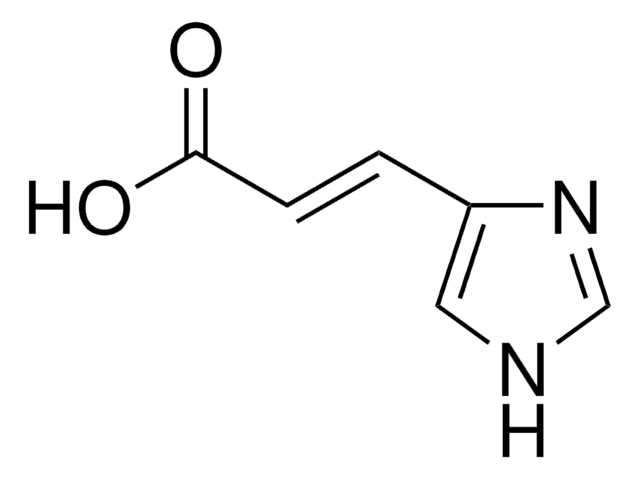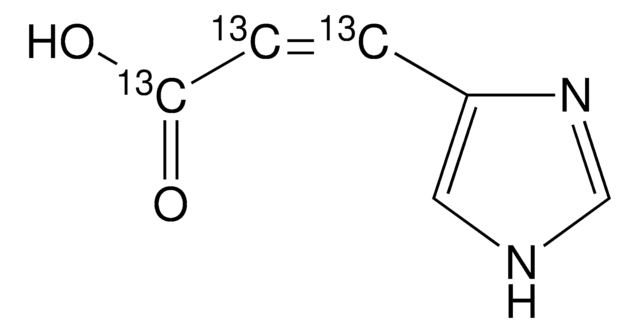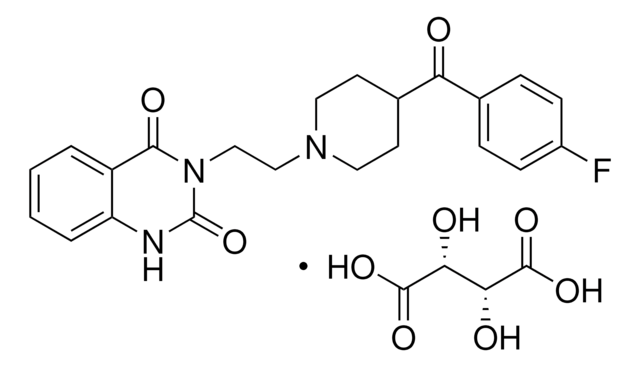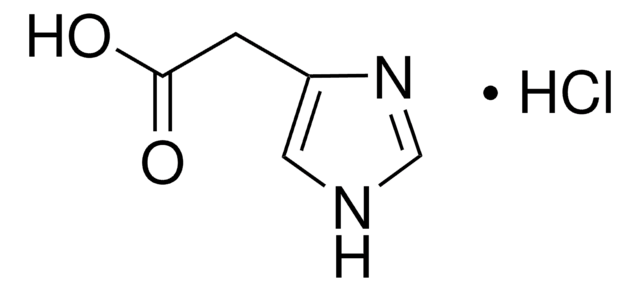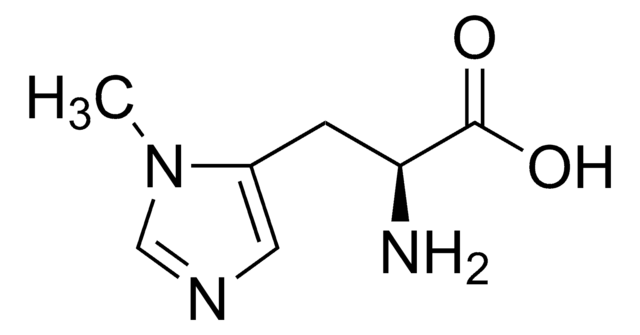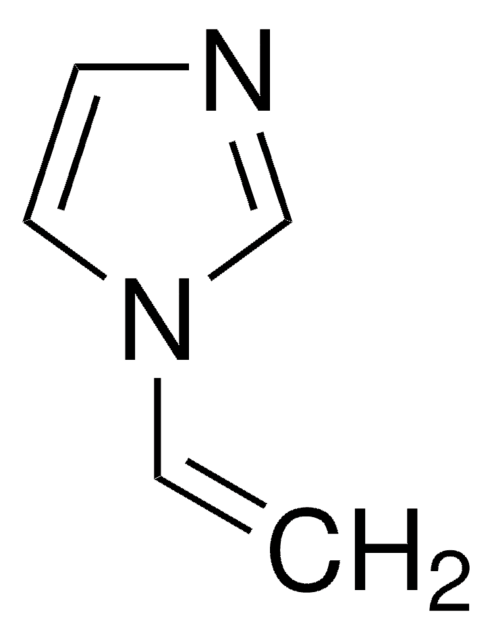U6883
cis-Urocanic acid
≥98% (HPLC), solid (fluffy)
Sinónimos:
cis-3-(1H-imidazol-4-yl)-2-propenoic acid, cis-UCA
About This Item
Productos recomendados
product name
cis-Urocanic acid, ≥98% (HPLC), solid (fluffy)
assay
≥98% (HPLC)
form
solid (fluffy)
storage condition
protect from light
color
white
solubility
H2O: >10 mg/mL
storage temp.
−20°C
SMILES string
OC(=O)\C=C/c1c[nH]cn1
InChI
1S/C6H6N2O2/c9-6(10)2-1-5-3-7-4-8-5/h1-4H,(H,7,8)(H,9,10)/b2-1-
InChI key
LOIYMIARKYCTBW-UPHRSURJSA-N
Application
- to study its protective effects on autoimmune encephalomyelitis
- in sample preparation to study the distribution of skin chemical components by line illumination Raman microscopy technique in Line-focus illumination mode
- as a standard to study the levels of cis-UCA and to check its effect on immune response in multiple sclerosis patients
Biochem/physiol Actions
Preparation Note
Storage Class
11 - Combustible Solids
wgk_germany
WGK 3
flash_point_f
Not applicable
flash_point_c
Not applicable
ppe
Eyeshields, Gloves, type N95 (US)
Certificados de análisis (COA)
Busque Certificados de análisis (COA) introduciendo el número de lote del producto. Los números de lote se encuentran en la etiqueta del producto después de las palabras «Lot» o «Batch»
¿Ya tiene este producto?
Encuentre la documentación para los productos que ha comprado recientemente en la Biblioteca de documentos.
Los clientes también vieron
Nuestro equipo de científicos tiene experiencia en todas las áreas de investigación: Ciencias de la vida, Ciencia de los materiales, Síntesis química, Cromatografía, Analítica y muchas otras.
Póngase en contacto con el Servicio técnico